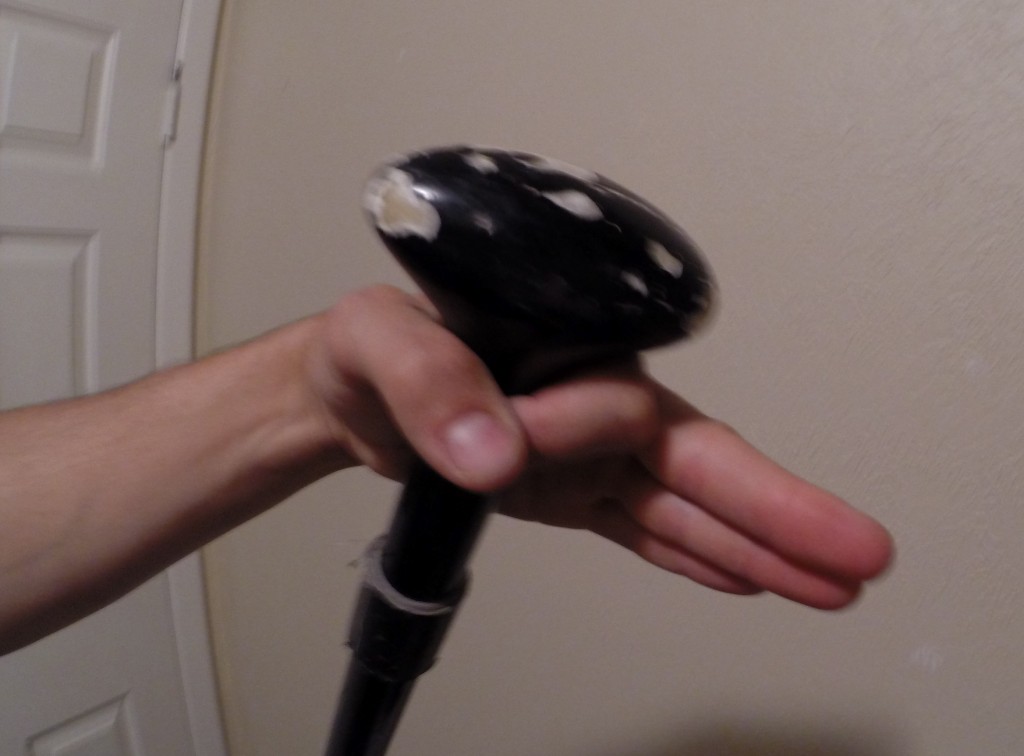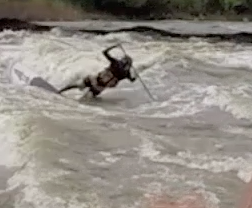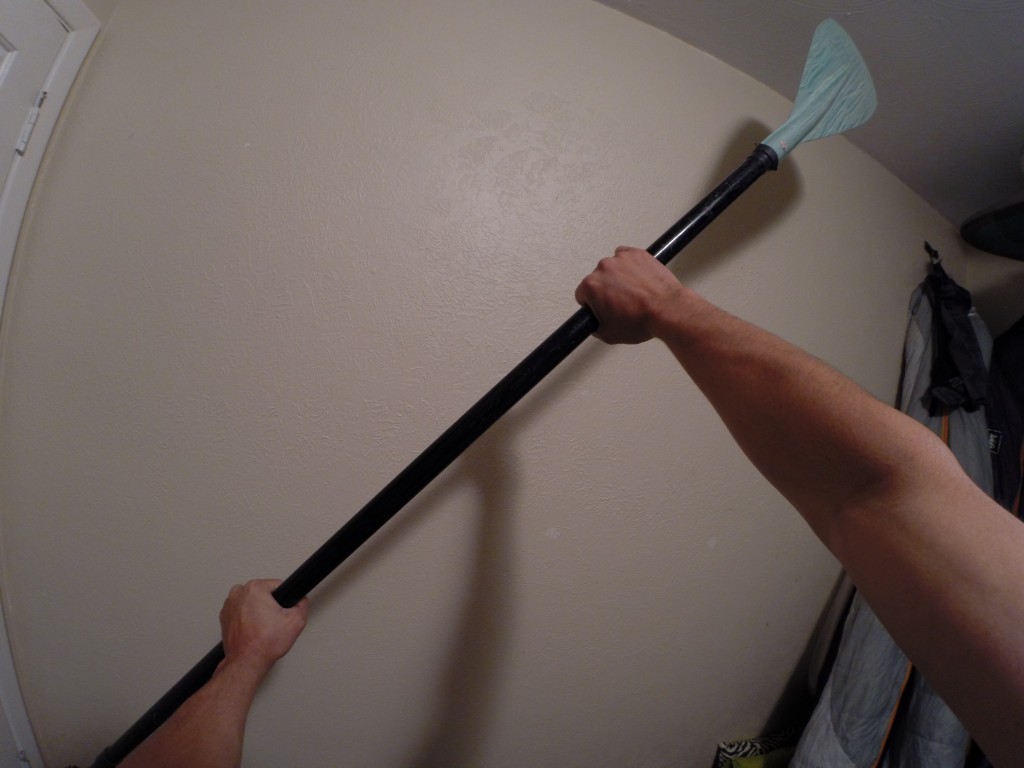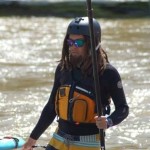River SUP surfing, more than any other style of SUP, requires a lot of swimming. Most of the time when you fall instead of retrieving your board it’s a better idea to swim to the shore or the eddy and let your board drag behind you by the leash. If you take the time to get back on your board, chances are you’ll end up much further down river.
When learning how to surf you will spend A LOT of time swimming. Swimming in the current of the river, with a board dragging you by your leash, and a paddle in one hand isn’t easy. Here are some strategies for making that swim to the eddy with your paddle.
The paddle throw
This technique is pretty simple. When you fall, chuck your paddle into the eddy and swim using both hands. It definitely makes swimming easier, but you run the risk of losing your paddle or hitting someone when you throw it. I personally dislike this technique but I see it used often.
The paddle crawl
To do this move you start by grabbing the shaft of your paddle with both hands, about shoulder width apart, near the middle of the paddle or slightly closer to the blade. You then swim while using the paddle in a kayaking style motion to pull your body to shore. With each paddle stoke you lift the blade out of the water, place the blade in the water in front of you, and make a stroke by pulling the blade toward you. It’ll feel like a crawling motion as you pull yourself closer to the shore.
The three finger stroke
Not as dirty as it sounds… this technique involves holding your paddle with one hand using just your thumb and pointer finger. To do this, allow your hand to slide all the way to the handle, and clasp it using just your thumb and pointer finger (like making an OK sign with your hand). Using the other three free fingers, swim as your would normally.

Holding a paddle with just a finger and thumb
Another tip for this technique is to hold your paddle with your downstream hand. If you’re swimming towards river right, hold your paddle with your left hand… or vice versa. This will allow the current to pull your paddle out of your way while swimming. This is my preferred way to swim with a paddle.
Getting back on your board
As I said earlier, when river surfing this is usually not the best bet. However if there is a huge eddy or you are surfing a large/fast board that can paddle upstream, then this might be the a good choice. Another option is to get back on your board but stay on your knees. This requires less time and is more stable as you paddle through the any wave trains or eddy lines.
…some other tips
Never try to stand up in fast moving water. If your foot gets trapped and you are pushed down, it takes just a couple feet of water to drown you. Keep swimming until the current eases.
When your leash is wrapped around your body, doing a quick barrel roll can untangle you. If swimming on your stomach, roll onto your back, and then roll again in the same direction back onto your stomach. This trick will get you out of 90% of leash tangles.
Offer your paddle handle to other surfers trying to swim to the eddy. While standing in the eddy you can easily flip your paddle around and hold it by the blade. Then extend the handle end out to be grabbed by a surfer who has just fallen and is struggling to make the eddy.
Jump towards the eddy when you know a fall is inevitable. This only works in deep water, but a well timed jump towards to shore can give you a head start on your swim. Better yet, you can also plant your paddle a do a mid-air draw stroke to get even more distance.

Jumping towards the eddy with a mid-air draw stroke
Don’t wear yourself out completely while on the wave. This is most important on bigger, gnarlier waves. With river surfing it’s easy to exhaust yourself by spending 10, 20, even 30 minutes on a single ride. If you continue to surf until you are tired, out of breath, and ready to collapse then you’ll have a hard time swimming to shore when you fall. Worse yet when you are out of breath and the wave holds you under after a fall, you’ll end up inhaling a bunch of river water.


